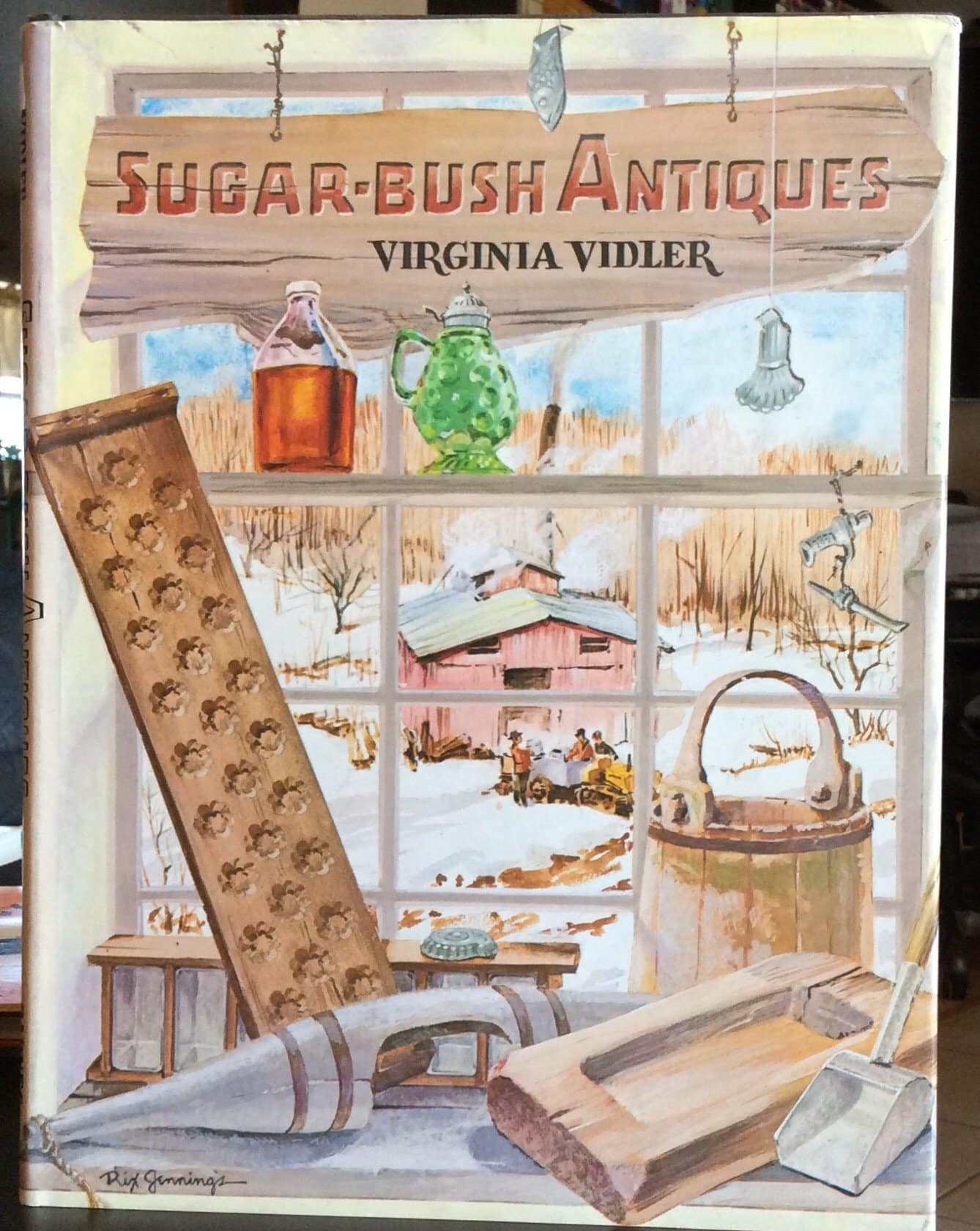Anyone who is keen on learning about or collecting maple syrup antiques should check out Virginia Vidler’s authoritative book on the subject: Sugar-Bush Antiques. Published in 1979, the book is way out of print, and contains some out-of-date pricing information. But any good independent bookseller (shout out to our very own Bear Pond Books) ought to be able to pluck one out of the universe for you at a decent price. And, if your interest, like mine, is in acquiring, understanding and appreciating a collection – and, where safe, even using some of the pieces in it – and not in acquiring wealth, you absolutely can’t go wrong with this volume as your guide.
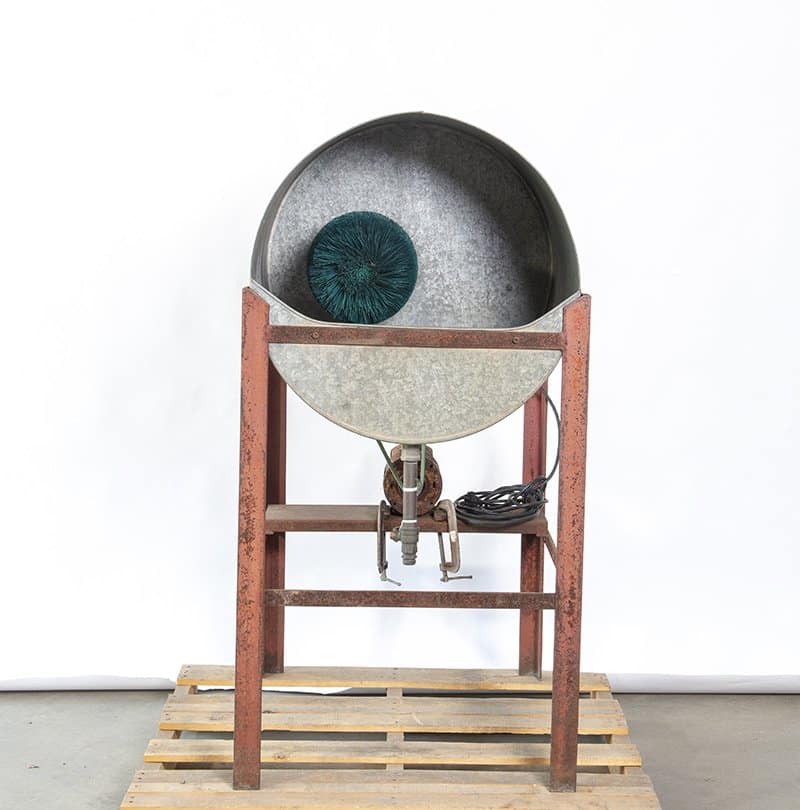
This working antique: an electric bucket washer from the middle of the 20th Century, was once playfully called a “Mantique,” by one of our customers. (You all are too funny.) This antique now lives and works in Wisconsin.
And I mean that literally. The book is too big to fit into a pocket, but, now that I own a copy, it goes into the giant-mom-purse whenever I antique. The book is valuable for its depth, its breadth and the many handy pictures. To give you some idea of why it makes such a good guidebook, I’ll give you a tour!
After a few prefuntory chapters about things you and I likely already know about, (That would be how to make maple syrup, and the indigenous North American origins of same.), Vidler takes us through the history of early European-American sugar making in objects. She describes the objects that remain from various periods, starting with European settlement in the 1600s and continuing on to the 1970s. It’s a journey, broadly speaking, from wood to metal, cast iron to tin and steel, and horse-and-human powered collection to tractor-powered operations. Plastic tubing makes an appearance only to underscore the growing obselescence of its forebearers. Gas and propane powered evaporators are not mentioned: wood-fired evaporators as a class, it seems, are not far enough out of use to be considered collectibles. Amen to that! Then, Vidler devotes individual chapters to the following: antique woodenwear, old tinwear, antique table wear, visual arts, and marketplace materials. This is the meat of the book.
The woodenwear available for collecting is surprisingly broad. Besides the predictable: sap buckets and sap collection pails, there are also home-whittled taps, wooden sap bucket lids, syrup settling barrels, funnels, strainers, sugar storage buckets and sugar cake molds. The sugar cake molds, in particular, are objects that I have seen but never recognized for their function. One such mold, called a “pennycake mold,” appears leaning against the side of the window casing on the left of the book jacket, above.
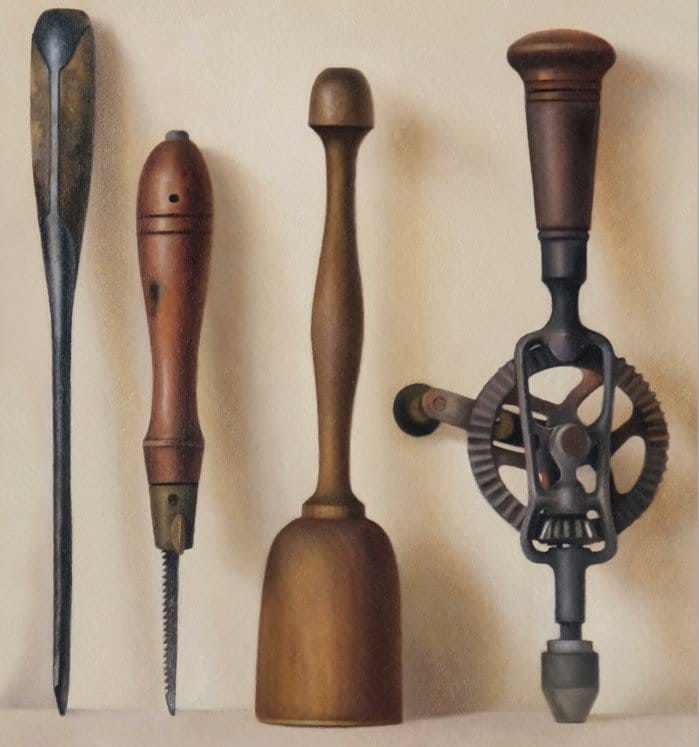
With the right bit, the antique brace on the right may have tapped maple trees. Painting by Kate Gridley. Photo courtesy of For the Land Publishing, LLC.
The tinwear chapter is even more broad. It covers the chronological changes in design of old cast iron taps. It also shows and describes an array of sap buckets (including the extra-long, 20 quart, “Sunday Bucket,” designed to allow the farmer to take a day off of collecting on the sabbarh), sap collection pails, and syrup storage and transportation containers. Strainers, scoops, slotted ladels and hydrometer holders are tools of particular note. As are maple sugar molds ranging from block sugar molds to muffin-like tins, to intricate and tiny individual molds. These latter molds are very common in antique stores (see the shell-shaped mold resing next to the pennycake mold on the book cover, above), and another of the objects my eyes have passed over withouth recognition.
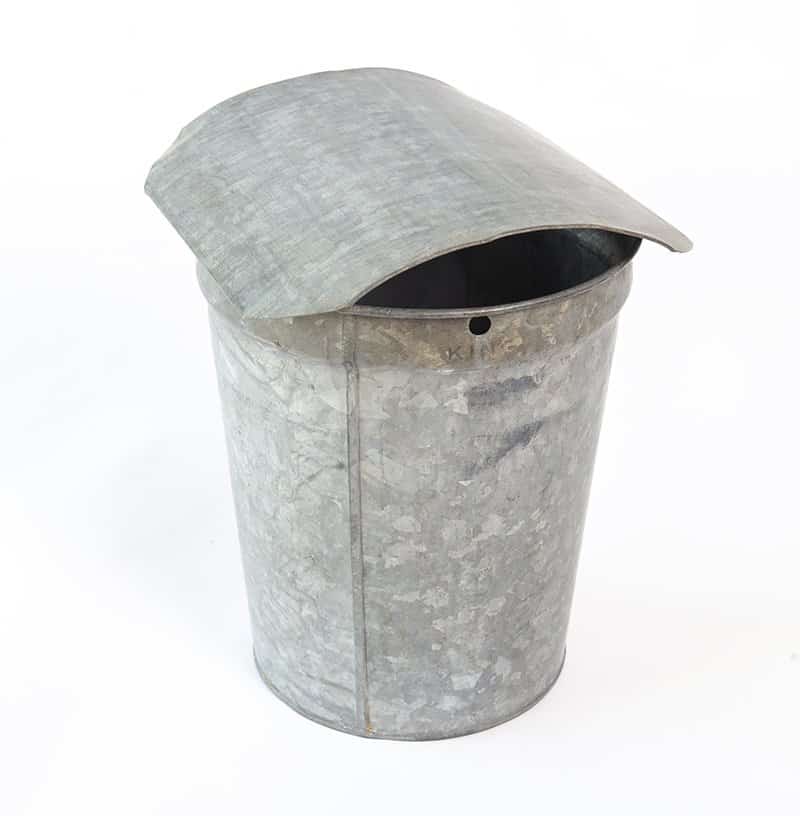
An antique galvanized bucket from our collection.
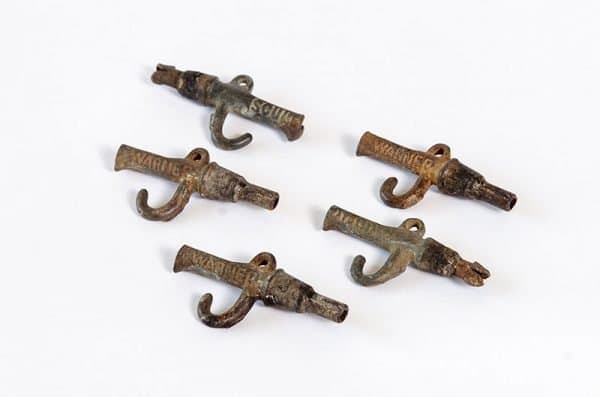
Several antique cast iron taps from our collection.
The next chapter, “From Tree to Table,” explores everything from rare syrup bottles and novelty syrup cans to tablewear. Tablewear includes some pretty pedestrian-looking earthenware jugs, but also some fabulously beautiful syrup pitchers like the green one shown just below the title on the book jacket, above. Yet another example of something I wouldn’t have recognized as a maple antique but for Vidler’s work.
I particularly enjoyed the next chapter on visual arts, expecially the paintings, lithographs and prints, which ranged from Currier & Ives prints to Grandma Moses’s wonderful painting “Sugaring Off.” Another painting by the same name is considered to be one of the most important American paintings of the 19th Century. Vidler includes a few illustrations from periodicals, as well as a few high-quality and fun photographs showing style of dress and sugaring practices of the early 20th Century.
Finally, and before closing with the suggestion (in Chapter 10) that you should use your collectibles (yes!), as well as the obligatory maple recipe collection (Chapter 11), Vidler lays out a case for collecting paper. That is to say, she makes a good argument that labels, producer certificates, incpection certificates and paper advertisements and logos are intersting, framable pieces that will dissapear if not preserved.
All in all, if maple syrup antique collecting is something you might like to do, Virginia Vidler’s Sugar-Bush Antqiues is a top-notch guide for doing so. Try it! And bring a little maple sweetness to your off season. Enjoy!
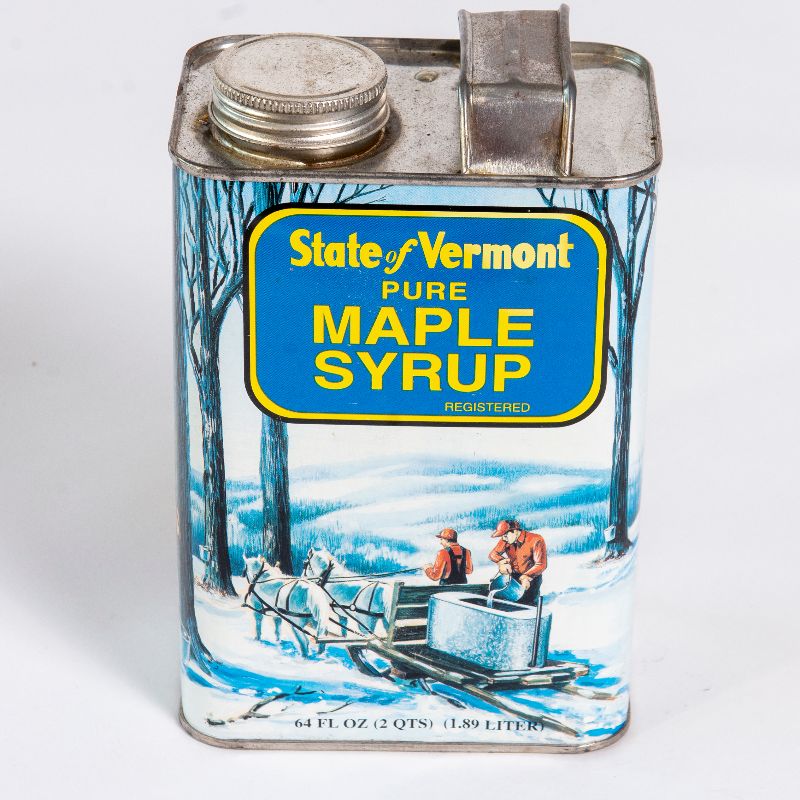
Another piece from our collection: an antique maple syrup tin.

